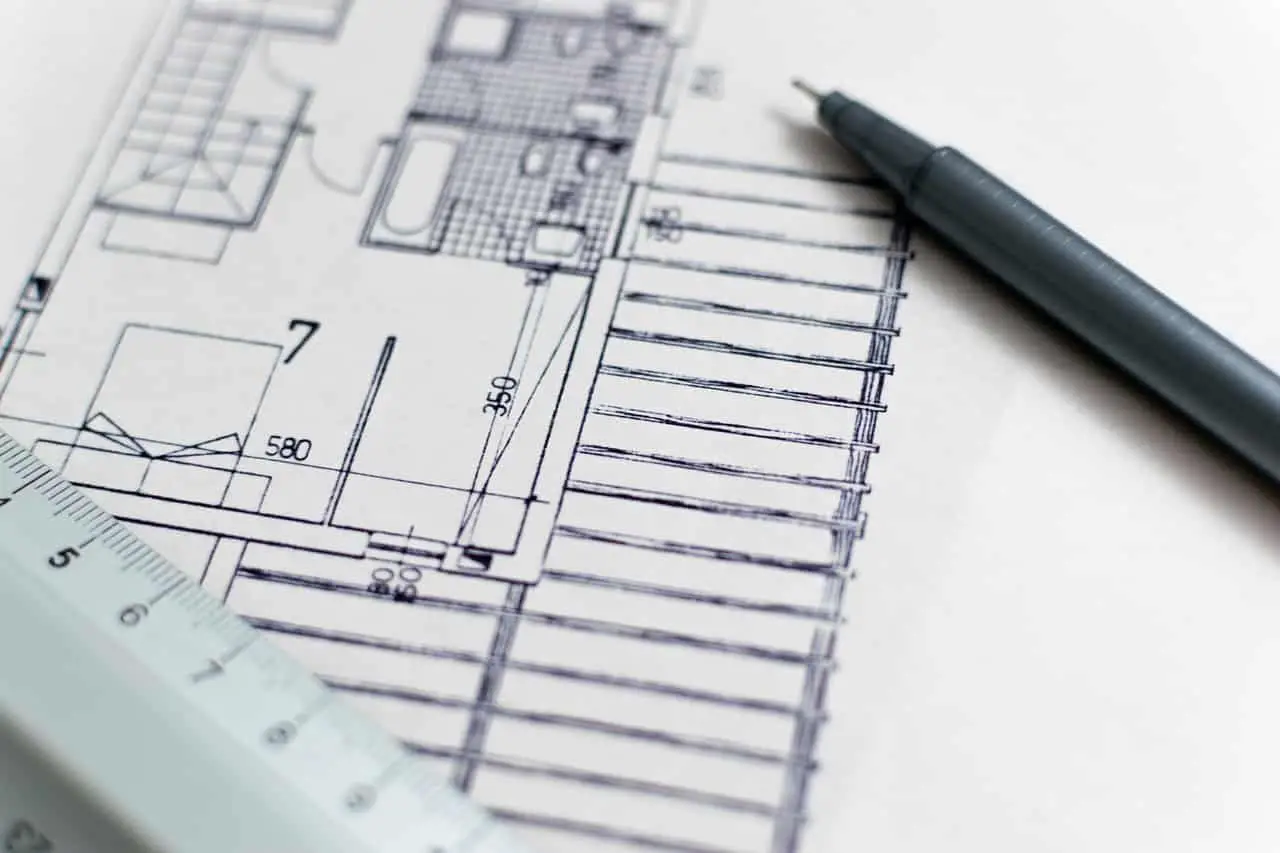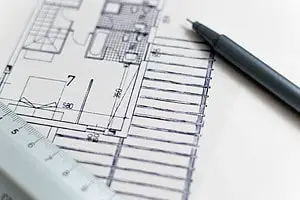The field of architecture is both a science and an art that requires a unique set of skills and knowledge. Aspiring architects must undergo a rigorous academic and professional training to hone their craft and stay abreast of the latest trends and techniques.
With so many architecture schools available, it is essential to compare and contrast the different teaching methods and philosophies to choose the one that best fits your needs and goals.
This article explores the differences between architecture schools in terms of their teaching methods and philosophies. From traditional design techniques to sustainability and environmentally conscious design, urban planning and community development, technology and digital design, collaborative learning environments, study abroad opportunities, research and innovation, and career preparation and professional development, we will examine the various approaches that different schools take to prepare their students for the challenging world of architecture.
By the end of this article, you will have a better understanding of the different options available and be able to make an informed decision about which architecture school is right for you.
Key Takeaways
- Architecture education requires a unique set of skills and knowledge, including rigorous academic and professional training, comparison and contrast of different architecture schools, traditional and digital design techniques, sustainability and environmentally conscious design, and emphasis on urban planning and community development.
- Collaborative learning environments and study abroad programs provide benefits such as teamwork, communication, problem-solving skills, different perspectives, social skills, exposure to international styles, techniques, and materials, and broadening understanding of diverse cultures and design perspectives.
- Learning from different cultural perspectives fosters an inclusive approach to problem-solving, inspires creativity and innovation, and raises awareness of ethical implications of design decisions.
- Research and innovation in architecture schools instill creativity and critical thinking, explore new ideas and methodologies, emphasize sustainability and environmental responsibility, and connect students and professionals in the field. Career preparation and professional development opportunities include workshops, internships, industry experts, career services, and professional organizations, providing practical skills, hands-on experience, industry connections, knowledge of latest technological advancements, confidence in abilities, and strong foundation for successful career in architecture.
Traditional Design Techniques
The utilization of conventional design techniques is a prevalent aspect of the pedagogical approach employed by various architecture schools. This approach is characterized by a focus on hand-drawing, model-building, and sketching as fundamental tools for design expression. The emphasis on these traditional design techniques is rooted in the belief that they provide a solid foundation for design thinking and enable students to develop a deep understanding of the design process. Additionally, traditional techniques are seen as valuable skills that allow architects to communicate their ideas effectively to clients and other stakeholders.
While some architecture schools continue to prioritize traditional design techniques, others have started to incorporate digital tools and technologies into their curricula. While these new techniques offer a range of benefits, including increased efficiency and accuracy, they also present challenges for students who may not have a strong foundation in traditional techniques.
This has sparked a debate within the architecture community about the role of traditional design techniques in contemporary architectural education. However, it is clear that a solid understanding of traditional techniques remains an essential component of architectural education, and architecture schools must strike a balance between traditional and digital techniques to ensure that students are well-prepared for the challenges of the profession.
Sustainability and Environmentally Conscious Design
This subtopic explores the important aspects of sustainability and environmentally conscious design in architectural practices.
One of the key points to consider is the emphasis on functionality, which involves designing buildings that meet the needs of the users while minimizing resource consumption and waste production.
Another crucial aspect is incorporating green technology, which involves using renewable energy sources and eco-friendly materials to reduce the negative impact on the environment.
Emphasis on Functionality
Functionality plays a significant role in the pedagogical approaches of various architecture schools, with an emphasis on designing spaces that serve their intended purposes effectively. Architecture schools that prioritize functionality believe that buildings should not only be aesthetically pleasing but should also provide a comfortable and safe environment for their users.
This approach emphasizes the need to create structures that serve the needs of the people who will use them, rather than putting a greater focus on the architect’s artistic vision.
Some architecture schools take a more user-centered approach to functionality by prioritizing the needs of the occupants of a building. This approach involves working closely with clients to understand their requirements and designing spaces that meet those needs.
Other schools focus on the technical aspects of functionality, such as the integration of heating, ventilation, and air conditioning systems, or the use of energy-efficient materials. Ultimately, the goal of emphasizing functionality is to create buildings that are both functional and aesthetically pleasing, while also meeting the needs of the people who will use them.
Incorporating Green Technology
Incorporating green technology is a key aspect of contemporary architectural design, as it involves the integration of sustainable materials and energy-efficient systems into building structures. This approach is gaining momentum as architects strive to create more environmentally conscious and sustainable buildings.
Green technology is being incorporated in various ways, from sourcing local materials to utilizing renewable energy sources such as solar and wind power. Architects are also exploring innovative ways to reduce energy consumption and minimize waste, such as through the use of green roofs and rainwater harvesting systems.
Architecture schools are increasingly recognizing the importance of incorporating green technology into their teaching curriculum. Students are encouraged to consider the environmental impact of their designs and to explore ways in which they can incorporate sustainable practices into their work.
This involves not only learning about the latest green technologies, but also understanding the broader context of sustainability and the role that architecture can play in fostering a more sustainable built environment. By integrating green technology into their teaching methods and philosophies, architecture schools are preparing students to become more responsible and environmentally conscious architects, who are better equipped to tackle the challenges of the 21st century.
Urban Planning and Community Development
Urban planning and community development are often emphasized in architecture schools through a holistic approach that integrates social, economic, and environmental considerations into the design process. Architecture programs aim to create graduates who are able to understand the complex relationships between the built environment and the communities they serve.
Students are exposed to various theories and methods that seek to foster sustainable, equitable, and livable cities. One key aspect of urban planning and community development in architecture schools is the focus on participatory design. This approach involves engaging stakeholders, such as residents, community groups, and local authorities, in the design process.
This allows for a more inclusive and democratic approach to urban planning, where the needs and aspirations of the community are taken into account. Students are taught to use various tools and techniques, such as community mapping, surveys, and workshops, to facilitate participatory design. Through this approach, architecture students are able to develop a deeper understanding of the social and cultural context of the communities they serve, and are better equipped to design buildings and spaces that meet their needs.
Technology and Digital Design
The integration of technology and digital design has become a prominent focus in contemporary architecture education, enhancing the design process and enabling architects to create more complex and innovative structures. This shift in architectural education has been driven by the need to keep up with the fast-paced technological advancements in the field, as well as the increasing demands for sustainable and energy-efficient buildings.
Here are some examples of how technology and digital design are changing the landscape of architecture education:
-
Parametric design software such as Grasshopper and Rhino are now commonly used in architecture schools to generate complex geometries and patterns that would be impossible to create manually.
-
Building Information Modeling (BIM) software is used to create detailed 3D models of buildings that allow architects to simulate how a building will perform in different environmental conditions, such as wind and sunlight.
-
Augmented reality (AR) and virtual reality (VR) technologies are used to create immersive experiences for clients, allowing them to visualize and interact with a building before it is even built.
-
3D printing is becoming an increasingly important tool in architecture education, allowing students to create physical models of their designs quickly and accurately, and experiment with different materials and construction techniques.
Overall, the integration of technology and digital design in architecture education has opened up new possibilities for architects to create more sustainable and efficient buildings, while also providing students with the skills and tools they need to succeed in a rapidly evolving field.
Collaborative Learning Environments
Collaborative learning environments have become increasingly popular in architecture education, providing students with opportunities to work together and learn from each other’s strengths and weaknesses. These environments are designed to promote teamwork, communication, and problem-solving skills, which are essential for success in the field of architecture.
Collaborative learning environments can take many forms, including group projects, peer reviews, and team-based assignments. One of the main benefits of collaborative learning environments is that they allow students to develop a deeper understanding of the subject matter by engaging in discussions and debates with their peers. This type of learning encourages students to think critically and to consider different perspectives, which can lead to more innovative and creative solutions.
Additionally, collaborative learning environments can help students to develop important social skills, such as leadership, communication, and conflict resolution, which are essential for success in the workplace. Overall, collaborative learning environments are an effective way to prepare students for the challenges of the architecture profession.
Study Abroad Opportunities
The study abroad opportunities in architecture schools provide international experience and exposure, allowing students to learn from different cultural perspectives.
These experiences broaden students’ knowledge and understanding of various architectural styles, techniques, and materials used in different parts of the world.
Studying abroad also enables students to develop a global network, which is crucial for architects who may work on projects in different parts of the world.
International Experience and Exposure
International exposure and experience is a valuable component of architectural education, providing students with a broader understanding of diverse cultures and design perspectives.
This exposure can take various forms, such as study abroad programs, international competitions, or even international internships.
Through study abroad programs, students are given the opportunity to immerse themselves in a different culture, gain a deeper understanding of the local architecture and design practices, and develop a more global perspective on the field.
International competitions offer another avenue for students to showcase their design skills and learn from different approaches to problem solving.
Finally, internships in international firms provide students with direct exposure to the workings of the industry in different countries, allowing them to gain practical experience and network with professionals from different backgrounds.
Overall, an international experience and exposure can enrich a student’s architectural education and prepare them for a globalized industry.
Learning from Different Cultural Perspectives
Exploring diverse cultural perspectives in architectural education can broaden students’ understanding of design and foster a more inclusive approach to problem solving. Architecture schools that prioritize such learning ensure that their students are exposed to different cultural perspectives, including those that are not native to their countries.
Studying architecture from a global perspective allows students to learn about the social, political, and economic factors that influence design decisions in various parts of the world. This knowledge is crucial for architects who aspire to work in different regions or collaborate with professionals from diverse cultural backgrounds.
In addition to broadening students’ understanding of design, learning from different cultural perspectives can also inspire creativity and innovation. Exposure to different architectural styles, materials, and techniques can challenge students to think outside the box and come up with new solutions to design problems.
Moreover, studying architecture from a global perspective can help students develop a critical eye and become more aware of the ethical implications of their design decisions. By learning from different cultural perspectives, architecture students can develop a more comprehensive understanding of the challenges facing the profession and become better equipped to address them in their future careers.
Research and Innovation
Research and innovation are integral components of the pedagogical approaches employed by various architecture schools, as they aim to instill a sense of creativity and critical thinking among their students. Schools that prioritize research and innovation often provide their students with opportunities to engage in research projects, attend workshops, and participate in conferences. These activities enable students to explore new ideas and methodologies, while also allowing them to connect with fellow students and professionals in the field.
Architecture schools that prioritize research and innovation also tend to emphasize the importance of sustainability and environmental responsibility. Students are encouraged to think about how their designs can have a positive impact on the environment and society as a whole. This approach not only helps students become more socially responsible but also prepares them for the evolving demands of the industry.
In the current climate, where sustainability and eco-friendliness are increasingly becoming a priority, architecture schools that accentuate research and innovation are well-equipped to provide their students with the knowledge and skills necessary to succeed in their careers.
Career Preparation and Professional Development
Architectural education programs that prioritize career preparation and professional development equip students with the practical skills required to succeed in the industry and foster a sense of confidence in their abilities. These programs aim to provide students with hands-on experience, industry connections, and knowledge of the latest technological advancements.
Here are some ways in which architecture schools focus on career preparation and professional development:
-
Workshops and Internships: Many architecture schools offer workshops and internships that allow students to gain practical experience and apply their theoretical knowledge. These opportunities help students develop a network of industry contacts and prepare them for the demands of a professional career.
-
Industry Experts: Architecture schools often bring in industry experts to speak to students about the latest trends, technologies, and practices in the field. These experts provide valuable insights into the industry and help students understand the skills and knowledge needed to succeed.
-
Career Services: Architecture schools often have dedicated career services departments that help students prepare for interviews, create portfolios, and develop job search strategies. These services provide students with the tools they need to succeed in the job market.
-
Professional Organizations: Architecture schools often encourage students to join professional organizations and attend industry events. This allows students to network with professionals in the field and learn about the latest developments in the industry.
By prioritizing career preparation and professional development, architecture schools help students develop the skills, knowledge, and contacts needed to succeed in the industry. The combination of theoretical knowledge and practical experience provided by these programs gives students a strong foundation for a successful career in architecture.
Frequently Asked Questions
What is the acceptance rate for each architecture school?
Unfortunately, we cannot provide an answer to the current question as it is not related to the given context of ‘Differences Between Architecture Schools: Comparing Teaching Methods and Philosophies.’
Acceptance rates for each architecture school can vary widely and are dependent on numerous factors such as location, program reputation, and applicant pool.
It is recommended that individuals interested in the acceptance rates for specific architecture schools consult the schools’ websites or contact their admissions offices directly.
How much does each architecture school cost in terms of tuition and fees?
The cost of tuition and fees varies among architecture schools.
For example, the average cost of tuition and fees for a year at Harvard Graduate School of Design is around $57,000, while the same for a year at the University of Michigan Taubman College of Architecture and Urban Planning is around $22,000 for in-state students and $47,000 for out-of-state students.
Similarly, the average cost of tuition and fees for a year at the Southern California Institute of Architecture is around $51,000, while the same for a year at the University of Texas at Austin School of Architecture is around $11,000 for in-state students and $22,000 for out-of-state students.
It is important to note that these costs may not include additional expenses such as housing, materials, and other fees, and may vary depending on the specific program or degree being pursued.
What is the average class size for each architecture school?
The average class size for each architecture school varies depending on the institution. According to the National Center for Education Statistics, the average undergraduate class size in 2019 was 20 students.
However, some architecture schools have smaller or larger class sizes. For example, the School of Architecture at the University of Virginia has an average class size of 15 students, while the Graduate School of Architecture, Planning and Preservation at Columbia University has an average class size of 25 students.
The size of the class can impact the quality of education, as smaller class sizes can allow for more individualized attention and feedback from instructors, while larger class sizes may offer more diverse perspectives and opportunities for collaboration.
What is the diversity of the student body at each architecture school?
The diversity of the student body is an important aspect of any educational institution, and architecture schools are no exception.
Each school has its own unique demographics, and while some may be more diverse than others, it is important to note that diversity takes many forms beyond just race and ethnicity.
For example, some schools may have a higher proportion of international students, while others may have a larger number of students from underrepresented socioeconomic backgrounds.
Additionally, some schools may prioritize diversity in their admissions process, while others may not.
Ultimately, the diversity of the student body can have a significant impact on the educational experience, as it can bring a range of perspectives and experiences to the classroom.
What is the job placement rate for graduates of each architecture school?
The job placement rate for graduates of each architecture school varies depending on several factors, such as the location of the school, the reputation of the program, and the quality of the graduates’ portfolios. However, in general, top-ranked schools tend to have higher job placement rates than lower-ranked schools.
For example, according to the DesignIntelligence rankings, the top 5 undergraduate architecture programs with the highest job placement rates in 2021 were Cornell University, Rice University, Virginia Tech, Syracuse University, and California Polytechnic State University, San Luis Obispo.
Additionally, the connections that a school has with the industry and the quality of its career services can also impact job placement rates. Therefore, it is important for prospective architecture students to research and consider all of these factors when choosing a school.
Conclusion
Architecture schools differ in their teaching methods and philosophies, which can greatly affect the education and career preparation of their students. Some schools focus on traditional design techniques, emphasizing manual drafting and model making. Others prioritize sustainability and environmentally conscious design, teaching students about the impact of their work on the environment. Urban planning and community development are also important subjects in some schools, as they teach students how to design spaces that are functional and beneficial to the community.
Technology and digital design are increasingly important in architecture, and some schools place a heavy emphasis on these subjects. Collaborative learning environments are also becoming more popular, as they allow students to work together and learn from each other’s strengths. Study abroad opportunities can provide students with valuable international experience and exposure to different cultural and architectural traditions. Research and innovation are also important in some schools, as they encourage students to push the boundaries of traditional design and explore new materials and methods.
Overall, students considering architecture schools should carefully research each school’s teaching methods and philosophies to determine which one is the best fit for their interests and career goals. While some schools may emphasize traditional design techniques, others may prioritize sustainability or digital design. By selecting a school that aligns with their interests and goals, students can receive a well-rounded education and prepare themselves for a successful career in architecture.




























































